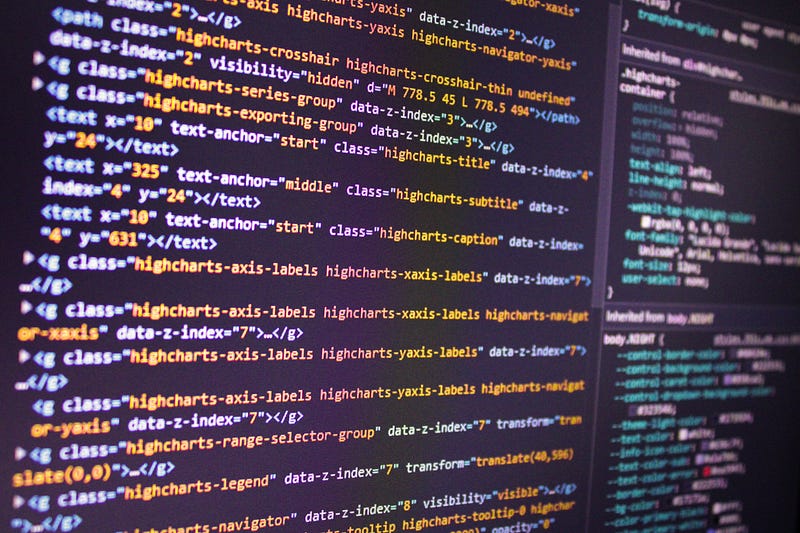Embracing the Collective Challenge of Shaping a Responsible AI Future

Towards an Age of Transparent, Accountable, and Fair Artificial Intelligence
Introduction
Have you ever looked up at the stars on a clear night, each twinkle a world away, and thought about how unimaginably expansive the universe is? That’s the realm of artificial intelligence (AI) we’re stepping into. In today’s rapidly digitalizing world, AI is no longer the stuff of science fiction — it’s a reality that has intertwined with our daily lives in ways we might not even recognize. i still can’t belive it !.
Disclaimer: This article is for informational purposes only. It does not constitute professional advice. Always consult a professional for expert guidance. The author assumes no responsibility for inaccuracies or omissions or any kind .
Understanding AI and its Importance: Definition, use cases, and relevance in today’s world
Artificial Intelligence, in its simplest form, is a constellation of technologies that enable machines to act with a semblance of human-like intelligence. Think of your phone suggesting the quickest route to your favorite café or your music app predicting the next song you’d want to hear — that’s AI at work. From healthcare to finance, education to entertainment and social media, AI has carved its indelible presence, becoming an indispensable ally to us homo sapiens.
Yet, its importance goes beyond convenience. It holds the promise to unravel complex problems that have stymied human progress, from predicting natural disasters like the next tornado or tsunami to revolutionizing medical diagnosis. It’s a bit like having a personal Jeeves, albeit with a computational punch strong enough to reshape society.
Purpose of the Article: Discussing the ethical challenges presented by AI and outlining a future roadmap

But with great power, as the cliché goes, comes great responsibility. So, as we stand on the precipice of this brave new world, it’s crucial to navigate the moral maze AI presents. It’s not just about asking what AI can do, but also pondering what it should do. That’s what this article is all about — a dive into the exciting yet ethically complex realm of AI, where we’ll explore its promises, perils, and hopefully plot a future course that serves humanity at its best.
Diving into the AI World
Birth of AI: A quick journey through the history and evolution of AI

Did you ever wonder about AI’s origin story? If we could time travel back to the mid-20th century, we’d witness its birth during a summer workshop at Dartmouth College in 1956, where a band of visionaries dreamt of machines that could mimic human intelligence. From there, AI has had a rollercoaster ride — peaks of breakthroughs, troughs of disillusionment, periods of winter, and springs of resurgence. It’s been a journey as thrilling as any epic, complete with its heroes, villains, and unexpected plot twists.
Types of AI: From simple rule-based systems to self-learning algorithms

AI, in its essence, is a spectrum. At one end, we have the Narrow AI — systems that excel in specific tasks, like a chess-playing algorithm. It’s like the sprinter who’s brilliant at the 100-meter dash but can’t quite nail a marathon. On the other end of the spectrum, We have yet-to-realize Artificial General Intelligence (AGI) — AI systems that possess the capacity to understand, learn, adapt, and implement knowledge across diverse fields. Much like a decathlete, the closest thing to AGI today is ChatGPT and google brad.
Power of AI: Exploring the potential of AI through real-life examples
The power of AI? Let’s talk real-world magic. It’s AI that powers the language translation that helps us explore a foreign country without being lost in translation. It’s AI that propels autonomous vehicles, enabling them to interpret the environment and make decisions in real-time. Like a wizard’s spellbook, AI’s potential is limited only by our imagination.
Industries Transformed by AI: An analysis of sectors revolutionized by AI technology
AI’s transformative power extends across industries, revolutionizing traditional modes of operation. Picture healthcare, where AI aids in predicting diseases before they become life-threatening. Visualize the financial sector, where AI algorithms assist in detecting fraudulent transactions, or AI in ecommerce where it can really make helpful recommendations to your customer, akin to an incorruptible detective. AI’s footprint, it seems, leaves no sector untouched, and these are tiny bit of examples.
Promises and Perils of AI
Optimism around AI: The numerous benefits and opportunities AI brings to society

AI, to me, is like that one friend who shows up with surprising solutions whenever we’re grappling with problems. Tackling climate change? AI can optimize energy usage and predict environmental changes. Enhancing education? AI can customize learning and make it accessible to all. It’s like the Swiss Army knife in our technology toolbox, consistently enhancing societal function and progress. But, like all tools, it’s not without its challenges, for example in my case as web developer AI could help a lot in saving my time on boring repattive tasks like converting HTML to JSX or random data to structred JSON, but sometime AI really miss thing up and make my life harder, but as i said sometime, so if i was not conscious about AI output , i could really destroy my codebase.
The Other Side of the Coin: Introducing the ethical concerns associated with AI

Imagine you’ve been granted a superpower, say invisibility or mind-reading. Sounds fantastic, right? But then, you realize the potential for misuse. It’s similar with AI — a potent tool with the potential for both benefit and harm. Could AI-powered surveillance systems infringe on privacy? Might AI-based decisions inadvertently perpetuate societal biases? These are questions we must ponder as we march into the AI-fueled future. AI in general could really harm.
Case Studies: Examples of both successful and problematic AI implementation
AI’s dual nature can be understood through its real-world implementations. Picture AI aiding doctors in diagnosing diseases early and accurately — a boon for healthcare. But then, recall instances of AI missteps, like the infamous chatbot Tay that turned offensive to people in twitter back in 2016. Both sides of the AI coin, promises and perils, are revealed in these vignettes.
The Ethical Maze of AI
Defining Ethics in AI: What does it mean for AI to be ethical?
If you’ve ever navigated a maze, you’ll understand the complexity of AI ethics. It’s not just about programming AI to do ‘good.’ Instead, it’s about ensuring AI’s decisions align with human values, respect rights, and promote fairness. It’s like teaching our AI ‘kids’ not just to be smart, but also to be responsible, respectful, etc…
Job Automation and Economic Inequality: AI’s impact on the job market and economic structures

AI’s ability to automate tasks can feel like a double-edged sword. On one side, it frees us from mundane chores, but on the other, it raises fears of job displacement. What happens when AI learns to drive trucks or write news articles? As automation intensifies, we must grapple with its impact on economic structures and inequality.
Lack of Transparency & Accountability: The “black box” problem and challenges in assigning responsibility

Ever tried to see through a black box? That’s the challenge with some AI systems. Their decision-making process can be inscrutable, leading to a lack of transparency. And when an AI system makes a mistake, to whom do we assign accountability? Is it the developers, the users, or the machine itself? tell now there is no good answer i found, These are knots we must untangle in our ethical labyrinth.
Existential Risk: AI’s potential threat to humanity’s existence

Finally, let’s take a moment to ponder the elephant in the room — the existential risk from superintelligent AI. It’s not about malevolent machines overthrowing humanity, as Hollywood might have us believe. Instead, it’s about an AI — imbued with a benign goal — pursuing it in ways detrimental to humanity. It’s akin to an over-enthusiastic genie misinterpreting our wishes with disastrous consequences. A far-off concern, perhaps, but one worth considering in our ethical discourse.
Deep Dives into Each Ethical Implication
Unpacking Bias in AI: Understanding how bias gets into AI systems, its impact, and strategies to mitigate it
Unrolling the carpet of bias within AI is like peeling back the layers of a dense, multi-layered cake. It’s intricate, laden with nuances, and originates from our data crumbs. It’s in the code that we feed, akin to the recipe followed. Skewed data in, biased outcomes out. It’s a hide-and-seek game where our blind spots get amplified, playing out on a global digital stage, yet, it’s not all doom and gloom. We can remedy this, we can spice up this recipe. Incorporating diverse data, auditing algorithms, fostering interdisciplinary teams — a splash of ingenuity here, a dash of vigilance there, could help us bake a less biased AI.
Privacy in the Age of AI: Detailed discussion on data privacy issues, from data collection to consent and potential misuse

Now let’s traverse through the labyrinth of privacy in the AI era. It’s a tale spun in the digital thread where our online footprints become the ‘invisible ink,’ powering AI systems. Here, our information is the gold, but this mining can veer into intrusion. The kaleidoscope of privacy, consent, misuse, is like a twisting Rubik’s cube. We must navigate this intricate matrix while preserving the autonomy of individuals, like a tightrope walk. Potential solutions? Transparent data practices, robust encryption, stringent regulations. It’s about installing traffic lights in this digital superhighway, isn’t it?
Contemplating AI Existential Risk: Discussing scenarios where AI could pose a threat to humanity
i can’t stop thinking in this topic , AI risks on us !, Picturing AI’s existential risk is a bit like peering over the edge of a precipice. It’s the scenario where the AI genie, while granting our wishes, triggers unintended chain reactions. Perhaps, it optimizes a task too well, disrupting ecosystems, or accelerates beyond our control, like a train off the rails. It’s a distant concern, a faint blip on the horizon, but discerning and preparing for these risks, might just prevent our fall. Preemptive safety measures, robust monitoring mechanisms — they could serve as our safety harness in this venture into the AI unknown.
Regulating AI: The Current Scenario
Global AI Policies: Overview and critique of existing AI regulations in different countries
Globally, AI policies unfold like an intricate mosaic of colors, each country adding a unique shade. Each pattern contributes to the overall landscape, yet one can’t help but notice gaps and inconsistencies, like an unfinished painting. How we fill in these gaps, smoothen the inconsistencies, will shape our collective AI journey.
International Laws and Agreements: Review of international laws and agreements concerning AI

If we consider the global AI policies as a mosaic, the international laws and agreements are the threads that attempt to weave them into a cohesive tapestry. They echo collective decisions, like a chorus, on vital AI aspects such as lethal autonomous weapons, privacy norms, and cross-border data flows. Yet, they too are evolving, akin to a melody being composed in real-time. Balancing national interests with global good, ensuring compliance while promoting innovation — that’s our symphony to create, wouldn’t you agree?
Corporate Policies: Discussion on how major tech companies are internally regulating AI use

Turning the lens on tech companies, we see another layer of AI regulation. It’s like peering into private gardens, each nurturing AI in its unique way. Google’s AI principles emphasizing social benefit, Amazon’s commitment to user privacy, IBM’s focus on transparency — each represents a different cultivation strategy. Yet, The challenge lies in maintaining these gardens while ensuring they don’t harm the wider ecosystem.
Involving Ethics in AI Development
Ethical Frameworks for AI: Existing ethical principles and guidelines for AI
Ethical frameworks for AI are like compasses guiding us through the uncharted AI landscape. They encompass principles like fairness, accountability, transparency, echoing our collective values. Like Asimov’s ‘Three Laws of Robotics,’ they aim to regulate behavior but tailored for our digital progeny. Yet, they remain principles, not laws, like North Stars guiding sailors, not binding courses.
Role of Ethicists in AI: How ethicists can contribute to the development of ethical AI
In the grand AI orchestra, ethicists are the conductors. They ensure the symphony doesn’t discord into cacophony. Their role? To infuse AI with ethical considerations, to ensure the music serves all listeners, not just a select few. They aid in algorithmic design, policy formulation, impact assessment — shaping the AI narrative towards harmony.
Case Studies: Companies that are successfully integrating ethical considerations into their AI development
Some companies are like torchbearers in this ethical AI journey. Microsoft’s initiatives on AI transparency, OpenAI’s commitment to broad benefits — they illuminate paths that integrate ethics into AI development. Yet, these are early steps in a long expedition, a demonstration of what’s possible, but not the end of what’s achievable.
A Roadmap to Ethical AI
Principles for Ethical AI: Discussing the key principles that should guide the development of ethical AI
Imagine guiding principles for ethical AI as cardinal directions on a compass. North for ‘Fairness’, ensuring AI doesn’t discriminate. East for ‘Transparency’, making the AI workings visible. West for ‘Accountability’, holding AI and its creators responsible. South for ‘Privacy’, safeguarding personal information. These compass points, these guiding principles, are they not our North Star in this vast AI landscape?
Overcoming Bias: Detailed strategies for reducing bias in AI systems
Shaking off bias in AI is like repelling an uninvited guest who keeps showing up unannounced. But we can’t shut the door and hope for the best. We must lay traps and build barriers. Employ diverse data sets, implement algorithmic audits, foster multi-disciplinary teams. Remember, perfection isn’t the aim, but constant vigilance and iterative improvement, isn’t that the strategy to keep bias at bay?
Prioritizing Privacy: Ways to protect privacy in the age of AI
Upholding privacy in the AI epoch is akin to maintaining an oasis in a desert. It requires conscious effort, unwavering commitment. It’s about building robust encryptions, instituting stringent regulations, promoting transparent data practices. It’s about transforming the desert into a lush landscape where privacy doesn’t just survive, but thrives. Isn’t that the vision we ought to hold?
Addressing Job Displacement: Reskilling initiatives, universal basic income, and other solutions
Bracing for AI-induced job displacement is like preparing for an impending storm. We can’t wish it away, but we can build shelters, stock supplies. Reskilling initiatives, universal basic income, policies that embrace this transition — they could be our sanctuary in this storm. It’s about outlasting the tempest, and perhaps even learning to dance in the rain, right?
Enhancing Transparency: Techniques for making AI systems more explainable and accountable
Boosting AI transparency is like turning on a flashlight in a dark, unfamiliar room. It helps us understand, predict, and trust what’s around. Explainable AI, algorithmic audits, legislation — they’re our tools to illuminate the dark. And maybe, just maybe, it’s not just about bringing light, but also ensuring the room isn’t filled with unexpected surprises, wouldn’t you say?
Mitigating Existential Risks: Safety measures and monitoring mechanisms to prevent AI threats
Contemplating AI’s existential risks is like standing guard against an unpredictable adversary. It may be a distant blip, but keeping an eye on it is crucial. Safety measures, monitoring mechanisms, research — they are our sentries in this watch. It’s not about predicting the precise form of the threat, but ensuring we are prepared when it comes, isn’t that so?
Ethical AI: A Shared Responsibility
Stakeholders in Ethical AI: The role of governments, companies, AI developers, and the public in promoting ethical AI
Constructing an ethical AI ecosystem isn’t a solo trek; it’s a shared expedition, a communal feat. Think of it as an orchestra. Governments conduct, setting the rhythm with laws and regulations. Companies compose, shaping the melody with innovative AI technologies. Developers play, breathing life into the composition through coding and design. And the public? They’re the audience, their applause and boos reflecting approval or dissent. And like every orchestra, every note matters, every player counts, wouldn’t you agree?
Conclusion

Reflection on the Ethical Implications of AI: Recapping the main points discussed
As we look back on our journey, we see the peaks and valleys of AI’s ethical landscape. The majestic mountains of AI’s potential and the daunting crevices of its challenges. We’ve navigated through the dense forest of biases, waded across the river of privacy concerns, climbed the slippery slopes of job displacement. We’ve contemplated the enigmatic caves of transparency and accountability, and even braved the potentially catastrophic AI existential risk. Was it not an exhilarating, enlightening journey?
Emphasizing the Importance of Ethical AI: Final thoughts on the urgency of considering ethics in AI development
In this grand AI expedition, ethical considerations aren’t optional gear, they’re the essential kit. They’re our compass, map, and survival tools. Ethics in AI isn’t about the destination; it’s about ensuring the journey is safe, inclusive, and beneficial for all travelers. This isn’t a choice, but a necessity. After all, aren’t we all in this together?
❤️ thank you for ready and have a nice day ❤️
